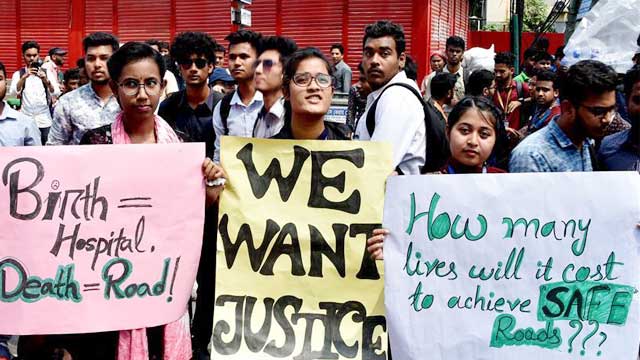Bangladesh needs to invest an estimated extra $7.8 billion over the next decade to halve its road crash fatalities, says a new World Bank report.
The report, Delivering Road Safety in Bangladesh, released in conjunction with the Third Global Ministerial Conference on Road Safety in Stockholm, points to the high death rate on Bangladesh’s roads caused by chronic lack of investment in systemic, targeted, and sustained road safety programmes.
It also identifies relevant investment priorities to reverse the trend.
The report is part of a broader study on road safety in South Asia’s eastern sub-region comprising Bangladesh, Bhutan, India, and Nepal that calls for regional measures to make roads and vehicles safer, even while making national-level actions a top priority.
The eastern subregion accounts for an estimated 86 percent of South Asia’s population, 92 percent of its vehicles, and 87 percent of its road crash fatalities.
“Years of rapid economic growth in South Asia, followed by a steep rise in vehicle ownership have led to mounting traffic deaths and contributed to lost economic opportunities,” said Hartwig Schafer, World Bank Vice President for South Asia.
“South Asia’s road safety crisis is unacceptable but preventable. The good news is that South Asian countries recognise the urgent need to protect their people, save lives, and sustain their journey toward greater prosperity. We at the World Bank stand ready to support their efforts.”
The report says annual road crash deaths per capita in Bangladesh are twice the average rate for high- income countries and five times that of the best performing countries in the world.
It highlights that children and working age population are most affected by road crash injuries in Bangladesh, according to a media release issued from Stockholm on Friday.
In 2017, road accidents became the fourth leading cause of death for children from the ninth leading cause of death in 1990.
The report calls for a new focus on safe road infrastructure design that meets the needs of all road users and vehicle types - animals, pedestrians, bicycles, rickshaws, motorcycles, motorized three-wheelers, cars, minibuses, buses, mini trucks, trucks, and agricultural vehicles.
A human-centered, rather than a purely vehicle-centered focus is required, with a rebalancing of "right-of-place" and "right-of-way" road functions.
“For Bangladesh, improving road safety is a national development priority, which will help the country boost economic growth,” said Mercy Tembon, World Bank Country Director for Bangladesh and Bhutan. “Bangladesh must take urgent steps to address road safety and minimise this tragic loss of human capital.”
Nirapad Sarak Chai, a road safety advocacy group, in a report said that 5,227 people were killed in 4,702 road accidents in Bangladesh last year.
The World Bank report emphasises the need to focus on regional trade corridors where crashes are significant, and roads are unsafe. All categories of road users and vehicle types are represented in these corridors with narrow lanes, limited or no shoulders, and inadequate pedestrian facilities.
Road safety conditions on these regional corridors mirror the nature and scale of conditions prevalent on national highways.
Crash data collected in a sample of highway sections across Nepal, India, and Bangladesh reveal annual fatality rates ranging from 0.3 to 3 fatalities per kilometre, at a yearly average of 0.87 fatalities per kilometre, which is an alarming death rate by any standard.
To better monitor the effectiveness of road safety efforts, the report recommends a shared regional initiative to harmonise crash data management and analysis systems across South Asia.
Currently, South Asian countries are in varying stages of developing crash data and performance management systems that analyse the underlying factors behind each crash – whether it was defective road infrastructure, faulty vehicle design or human error.
To complement these efforts and to facilitate more rapid and effective knowledge transfer, the report suggests South Asian countries could join the proposed regional road safety observatory for Asia and the Pacific.





